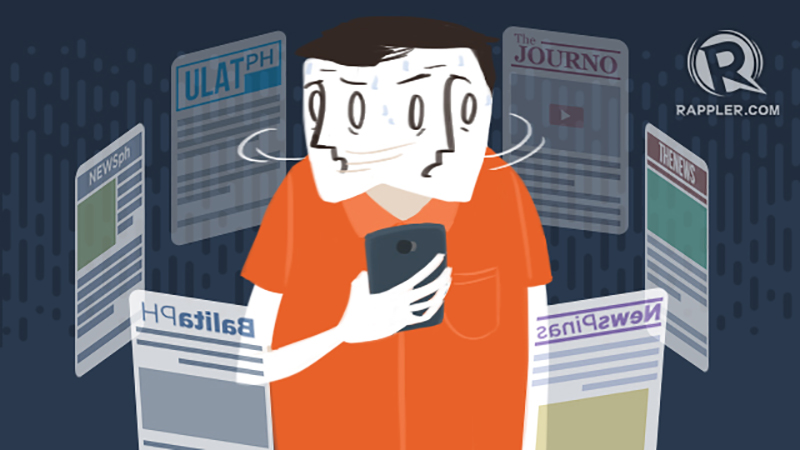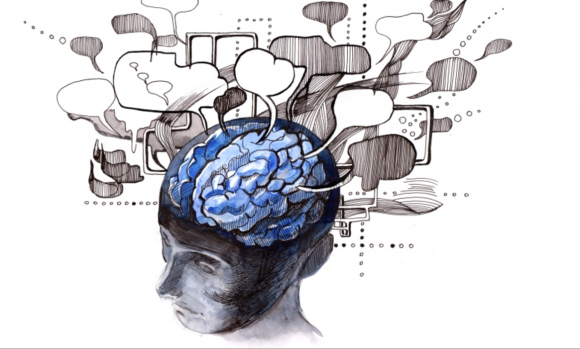Consider the following questions: a coffee and a custard tart cost one euro and ten cents; knowing that pastel de nata is one euro more expensive than coffee, how much does coffee cost? A damp spot doubles in size every day; knowing that the stain takes 48 days to completely fill a wall, how long does it take to fill half the wall? Finally, imagine that your salary is reduced by 50%; however, just two months later, his salary is increased by 75%; after these changes, do you earn a higher or lower salary than in the beginning?
If you answered “10 cents”, “24 days” and “greater” to the previous questions, then you may be at risk of more easily believing fake news, according to a study recently published in the scientific journal. cognition.
The peer-reviewed article based on the results of a pre-registered study suggests that the susceptibility to believe in false news is due not to a partisan bias, as argued in several sources, but to a diminished propensity to think analytically. and subjecting beliefs to cognitive scrutiny.
The investigation, conducted by Gordon Pennycook of Yale University, reveals a positive correlation between cognitive reflective style and perceived truthfulness of false news, regardless of the respondent's party affiliation or the political alignment of the news.
A reflective and analytical cognitive style can be assessed with questions such as those presented above, which, taken as a whole, constitute the Cognitive Reflection Test (Cognitive Reflection Test). This is composed of several questions carefully crafted to elicit an intuitive but incorrect answer, which must be subjected to cognitive scrutiny and corrected before the correct answer can be obtained.
Participants in this study were shown news synopses consisting of a headline, an image and a brief summary, simulating how these are typically found on the Facebook wall.
News synopses could be either real or false and ideologically aligned with the left, with the right, or non-political in nature. Before each news, participants should indicate its perceived degree of veracity, as well as the extent to which they would be willing to share it on a social network.
Additionally, all participants answered the various questions of the Cognitive Reflection Test.
The results revealed that respondents who tended to provide the correct answers to the test, thus revealing a greater propensity to reflect and correct the initial intuitive response, showed greater accuracy in detecting false news, whether or not they were in agreement with their personal political convictions. .
This study joins several others, published in the last decade, which have revealed that a reflective and analytical cognitive style, assessed by the Cognitive Reflection Test, is related to greater skepticism, a lesser tendency to embrace paranormal beliefs, conspiracy theories and pseudo-deep bullshit (Pseudo-Profound Bullshit; as revealed in a recent work, also by Gordon Pennycook, who won an Ig-Nobel in 2016).
In a broader perspective, these data have been framed in the so-called Dual Processing Theory, popularized by psychologist and Nobel Prize in economics in 2001, Daniel Kahneman, in his book “Thinking, quickly and slowly” (2011, Círculo de Leitores).
Moreover, it is also to Daniel Kahneman who is responsible for the original formulation of several of the questions included in the Cognitive Reflection Test.
Briefly, Dual Processing Theory suggests that a significant part of human thinking and reasoning is based on automatic, intuitive processes, based on heuristics that support rapid cognitive and decisional processes, albeit occasionally erroneous and subject to systematic biases .
These processes, called Type I, fulfill important adaptive functions, as they enable a quick and immediate response when this is required by the context - an example would be deciding whether or not to exit the highway, a decision that should be taken soon fractions of a second, without the possibility of a more careful weighting.
Nevertheless, human beings also have cognitive capacities capable of more elaborate, abstract and analytical cognitive reflections, which, however, tend to be more expensive in terms of attentional and temporal resources – these are called Type II.
Several studies conducted since the 1980s have shown that people often tend to privilege responses obtained by heuristic cognitive processes, Type I, even though they have the time and resources to resort to analytical processes, Type II, an observation that has supported the assertion of that humans tend to be cognitively stingy (Cognitive Misers).
Among the various factors that explain the failure to resort to type II deliberative and reflective cognitive processes are time pressure and the dilution of attention.
For example, a classic 1993 study by Daniel Gilbert revealed that when people divided their attention between two tasks to be performed simultaneously, they were more likely to believe messages explicitly flagged as false and erroneous.
That is, in view of the mere exposure to a message (such as the header of a news item on a social network), humans believe in its factuality from the outset (even though they have information that it is false), being necessary to allocation of attention and rational cognitive processes (type II) for this belief to be challenged and corrected.
Obviously, Type II processes are under volitional control and the use of these can be fostered, with such availability and motivation being sufficient to expend the necessary cognitive resources.
Even though it has existed, in one form or another, throughout the XNUMXth century, false news has recently gained greater prominence.
The widespread use of social networks facilitated their sharing and dissemination with considerable impact.
Furthermore, the way in which media material is presented and consumed on social networks tends to favor a quick, inattentive reading, and with reduced incentives for a more careful and reflective reflection.
Thus, contemporary research in Cognitive Psychology emphasizes the already recognized advice: before sharing news, stop and reflect on its content – is it plausible? Could it be false news?
Finally, here are the answers to the questions posed at the beginning: If coffee cost 10 cents and pastel de nata cost one euro more, then the price of the latter would be one euro and ten and both together would cost one euro and twenty – the correct answer is thus “5 cents”; given that the wet spot doubles in size daily and that in 48 days it occupies the entire wall, then it must have occupied half the wall the day before – the correct answer is therefore 47 days; Percentage increases/decreases are always applied to the current amount – imagine you receive €500; a 50% decrease means you receive €250; the 75% increase should now be applied to €250, resulting in around €438 (€250 + 75% of €250).
Author Nuno de Sá Teixeira graduated in Psychology from the Faculty of Psychology and Educational Sciences of the University of Coimbra, and a Ph.D. in Experimental Psychology from the same institution.
He has worked as a PhD researcher at the Department of General Experimental Psychology at the University Johannes-Gutenberg, Mainz, Germany, at the Institute of Cognitive Psychology at the University of Coimbra and at the Center for Spatial Biomedicine at the University of Rome 'Tor Vergata', Italy.
He is currently Visiting Assistant Professor at the Department of Education and Psychology at the University of Aveiro.
His scientific work has focused on the study of how physical variables (in particular, gravity) are instantiated by the brain, as “internal models”, to support perceptual and motor functions in the interaction with the world.
Thus, his interests depart from the hinge between thematic areas such as the Psychology of Perception, Psychophysics and Neurosciences.
Science in the Regional Press – Ciência Viva




















Comments